How to reduce food waste at home? What are the best ideas out there that can make the food we buy last longer and prevent it from ripening? In this article, we present 15 simple ideas anyone can follow to reduce their daily food waste – including some intergenerational grandma hacks.
Why Is It Important To Reduce Food Waste? Because of the Nutrients Cycle
Let’s go straight to the point: when we throw food away into the trash, it most likely goes to a landfill where it cannot properly decompose (except some cities worldwide that have started composting projects and organic “waste” trials).
But generally speaking, this decomposition challenge happens because landfills are filled with plastics (the non-recyclable ones at least), geo-textiles, and clay. So what happens is that there’s a sort of barrier between the food we’ve thrown away and the soil and the microorganisms and decomposing bacteria who inhabit it and would feed on the food we call waste.
Ultimately, we’re not allowing the Biosphere to do its work of recycling nutrients: which is at the core of any composting system. Remember hearing that famous saying from Lavoisier that “nothing is created and nothing is destroyed but everything is transformed“?
Our landfills are kind of making Lavoisier’s logic go over a hard time.
Reducing Food Waste Also Helps Avoid GHG Emissions and Hunger
Plus, another reason why food waste is important is that, on the one hand, landfill stockpiles lead to organic matter producing methane, a greenhouse gas 28 times worse (in terms of impact) than CO2. This makes food waste an environmental problem closely linked to global warming.
So when we reduce food waste – and compost the leftovers we can’t avoid throwing away avoiding methane emissions – we also reduce methane emissions from landfills. Makes sense, right?
On the other hand, 41 million people in over 40 countries are facing emergency levels of hunger today. 9.9% of all people are estimated to have been undernourished in 2020 (up from 8.4% in 2019) and +2.3 billion people (or 30% of the global population) lack year-round access to adequate food.
With climate change threatening to disrupt food production chains all over the world, plus a growing global population, more mouths will need to be fed over the coming years and so it is crucial we stop wasting food and distribute it well.
As the World Food Programme puts it: “Global hunger isn’t about a lack of food. Right now, the world produces enough food to nourish every man, woman, and child on the planet.”
With the proper planning and your help, millions of lives can be saved. Hopefully you are now inspired to learn some easy ways you can reduce food waste at home:
1 – Organizing Your Fridge Is Key to Reduce Food Waste
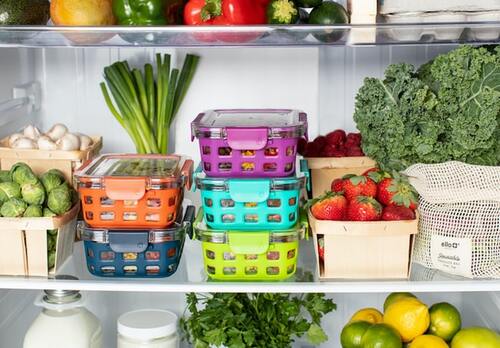
The number one stop if you want to reduce your food waste at home is your fridge.
Mind that the coldest part is above the vegetable tray while the warmest is at the top of the fridge. With this in mind, place all the raw food you get at the supermarket’s fresh section above the vegetable tray.
So try to place cooked products, cheese, and yogurt at the top of the fridge – this should help your food stay in the best condition for longer periods.
- Related content: Why Is It Important To Support Local And Small Businesses?
2 – Some Foods Are Better Outside the Fridge
Some fruits and vegetables don’t like temperature variations and are best kept inside the fridge: asparagus, mushrooms, cauliflowers, cherries, or grapes are some good examples.
However, many foods dislike the fridge’s cold and humidity (some even lose their taste qualities).
Make sure bananas, melons, pineapples, nectarines, tomatoes, apricots, or citrus fruits stay in your fruit basket rather than inside your fridge. Pumpkins, eggs, potatoes, garlic, or onions like dry places, open-air, and low light zones the most.
3 – Choose Paper Bags to Prevent Food Waste at Home
Beware of plastic bags that block the passage of air and promote food rottenness. Paper bags, possibly pierced by small holes, are the best choice.
4 – Organize Your Fruit and Vegetable Basket
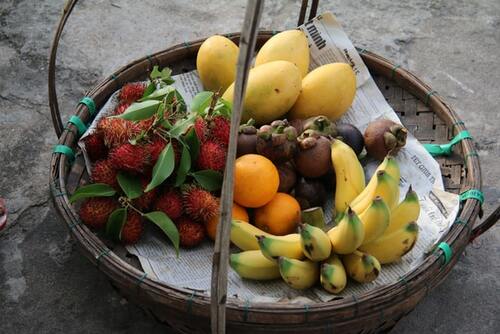
Storing your fruits and vegetables in the right order in the fruit basket so that the largest fruits do not crush the most fragile ones is also an important way of reducing food waste. Place the heaviest products such as citrus fruits or melons at the bottom of the basket and the lightest fruits on top.
This may seem quite obvious but how many times do we actually take those extra seconds to organize our fruit basket? Let’s fight our natural laziness to avoid food waste!
5 – Avoiding Some Fruit Mixes Is A Simple Way to Reduce Food Waste
Not mixing all fruits in the same basket, at the risk of seeing some ripen too quickly and rot is something worth considering too.
This has nothing to do with the quality of the food, but with the fact that some fruits emit large quantities of ethylene – an odorless and colorless gas that continuously ripens some fruits. These are the so-called “climate” fruits, and it is better to avoid mixing them.
Apples and bananas emit the highest amount of ethylene gas and isolating them from other fruits can be beneficial for their longevity. However, if your avocado, for example, is not ripe enough, placing it next to a banana or apple can help!
6 – Use Apples to Delay Potato Germination
Here’s another “secret”: ethylene is also a natural inhibitor of germination, which means it can help curb potato germination. Place an apple next to a potato to make it last longer!
7 – Separate Bananas According to Their Ripeness
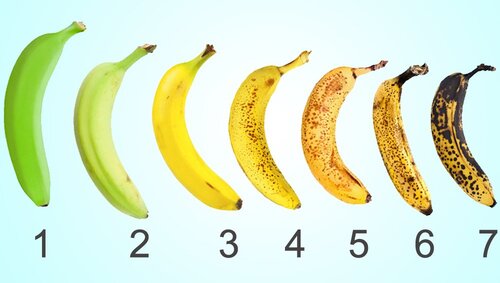
One more way to avoid food waste at home is to prevent bananas from ripening too quickly. To do that, separate the really ripe bananas from the other ones – remember they emit the ethylene gas. Like the singer Jack Johnson would say: if your bananas are too ripe, reuse them to cook some banana pancakes!
8 – Drizzle Your Fruits and Veggies With Lemon Juice
The citric acid in lemon juice limits browning because of air oxidation. Therefore, watering your pieces of fruit and vegetables with lemon juice will help store them longer.
9 – Use Paper Towels to Absorb Moisture
Some foods are very sensitive to moisture and rot much faster in humid environments. If you are thinking about salad you are 100% right: they are the perfect example of what we’re talking about here.
Placing a paper towel to soak up water in a dried (or even in a plastic bag) salad will help absorb excess moisture and prevent water from stagnating at the bottom. This tip to avoid food waste can extend the life of the salad for a few days – and now you know it!
10 – Wash Red Fruits With a Few White Vinegar Drops
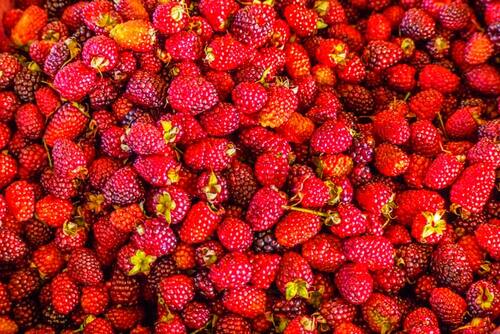
A few drops of white vinegar diluted in cold water kill a large part of the bacteria and parasites, slowing food degradation. While it is not advisable that we systematically wash fruits and vegetables before storing them, this tip is particularly recommended for fragile and difficult-to-store products such as red fruits.
Just soak the red fruits in slightly vinegared water and dry them well before storing them, for example, in a tupperware in the fridge – and don’t forget about the paper towel trick we’ve just covered.
Keep in mind that red fruits freeze very well without losing their structure, flavor, or nutritional properties. If they have ripened too quickly, remember you can always freeze them and use them later for a smoothie.
11 – Cut the Leaves of Root Vegetables
When drying, the tops of carrots or radishes will dehydrate the vegetables and speed up their decomposition – cutting them will help reduce moisture loss, increasing their integrity and help you reduce your food waste.
And don’t throw them away! The tops of many vegetables are edible: pesto with fennel tops, velvety with radish tops, cake with carrot tops… let your imagination run wild!
12 – Use Aromatic Herbs to Make a Bouquet
Once harvested, aromatic herbs are very fragile and wither quickly. To keep their flavor and appearance intact, make a small bouquet and place them in a glass of water in the refrigerator. Remember to renew the water every 2 or 3 days. You’ll be amazed by how long they will last!
13 – Conservation by Dehydration
Another food preservation technique that is less often thought of is dehydration.
In traditional ovens, the ideal temperature to dehydrate food is around 65°C. A higher temperature will cook food instead of drying it and the crust will prevent water from evaporating.
A more rustic method is to cut your fruits and/or vegetables cut into strips, place them on a grill or on wooden slats and expose them to the sun for one or more days. Remember to use place fine tissue on top to prevent insects from getting to the food and bring them home at night.
Using this technique you’ll have delicious dried fruits, for example!
Mind that the more water the food has, the longer the dehydration will take. For herbs, simply make small bouquets and hang them upside down, in the shade, protected by a pierced paper bag.
14 – Wrap Your Bread in a Towel
Since bread is part of most people’s everyday diet, bread conservation techniques can also play an important role in avoiding food waste at home.
Chances are that if you if asked grandma about this, she’d tell you the most basic method to keep fresh bread is to wrap it in cloth such as a tea towel or a bread bag, possibly in a paper bag.
We must then place it in a dry place, ideally between 14 and 18°C since the hot will dry the bread faster and the cold does not allow it to preserve all its taste qualities. If you enjoy a bread toast, place a branch of celery in the bag so that it molds less quickly and keeps its softness.
15 – Use Jars as Your Ally to Reduce Food Waste at Home
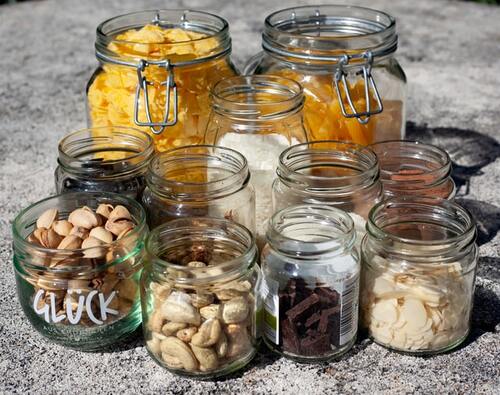
For fruits and legumes and cereals, jars can be great allies! They help protect food from midges, moths, and other small animals tempted to take a walk in your food pantry.
Note: this is article is an adapted version of ©youmatter France’s original article, which was written and published by Valentine Ambert.
[Photos by Syd Wachs, Ello, HOTCHICKSING, Alexander Schimmeck and Jasmin Sessler on Unsplash]

